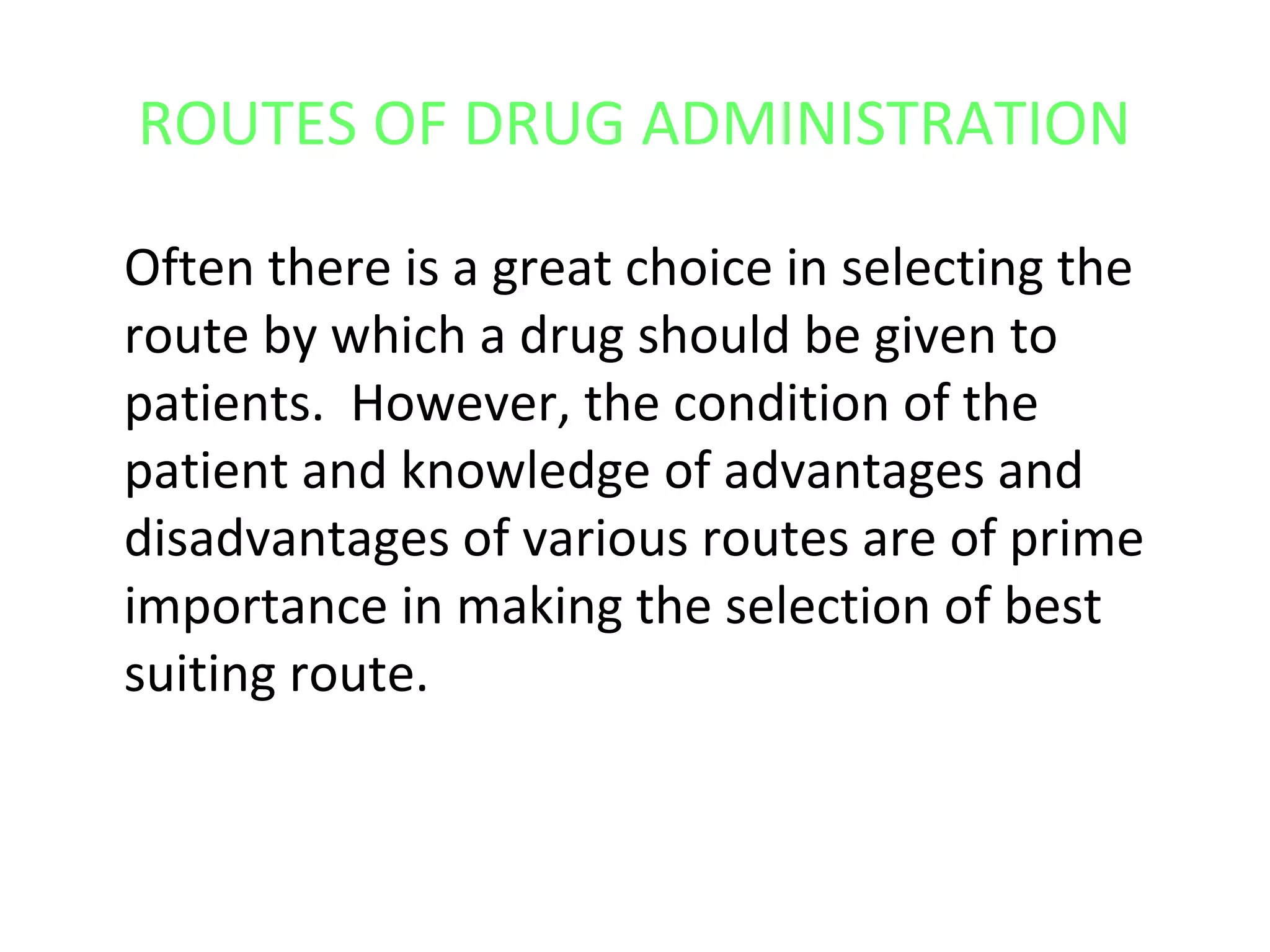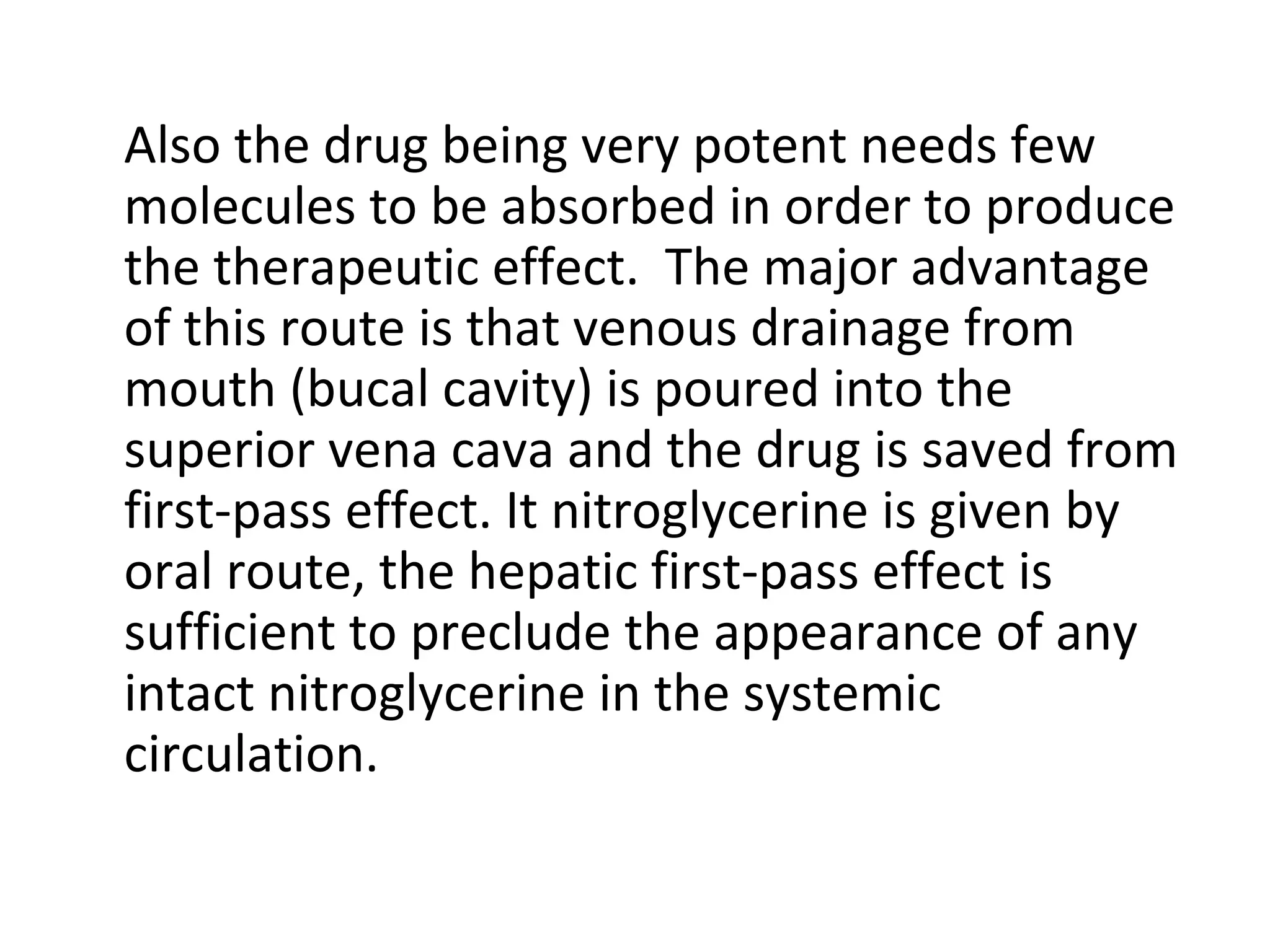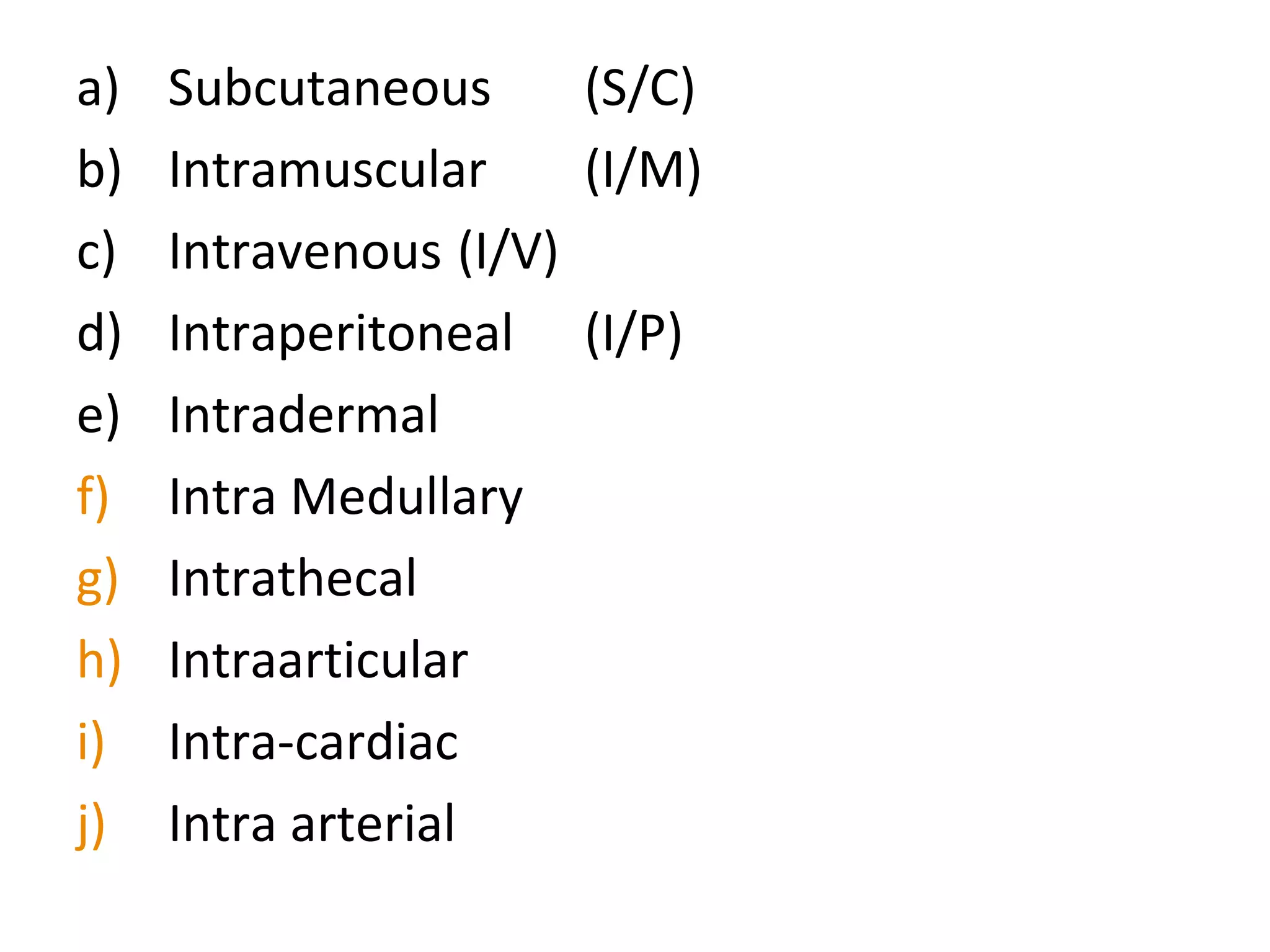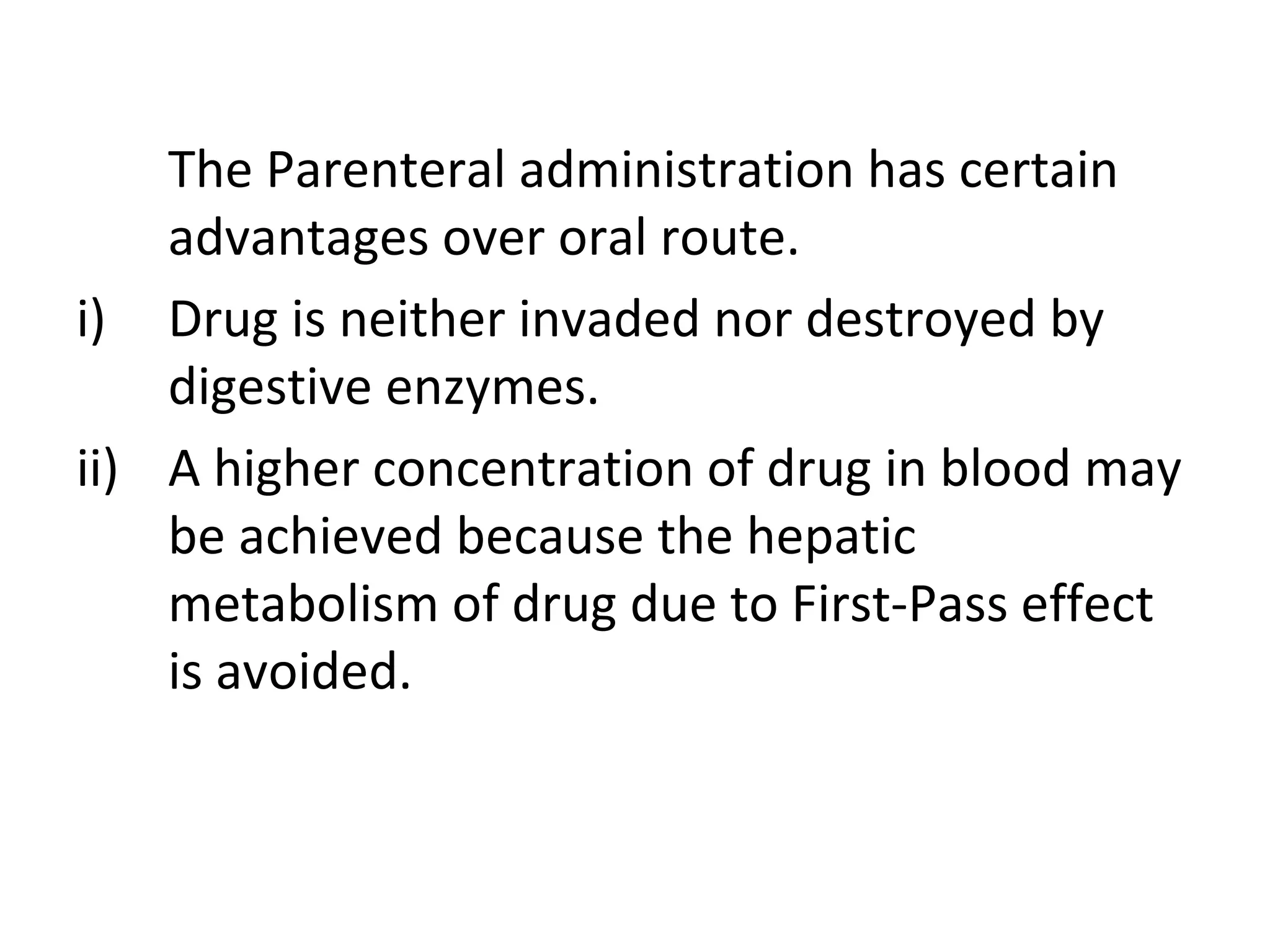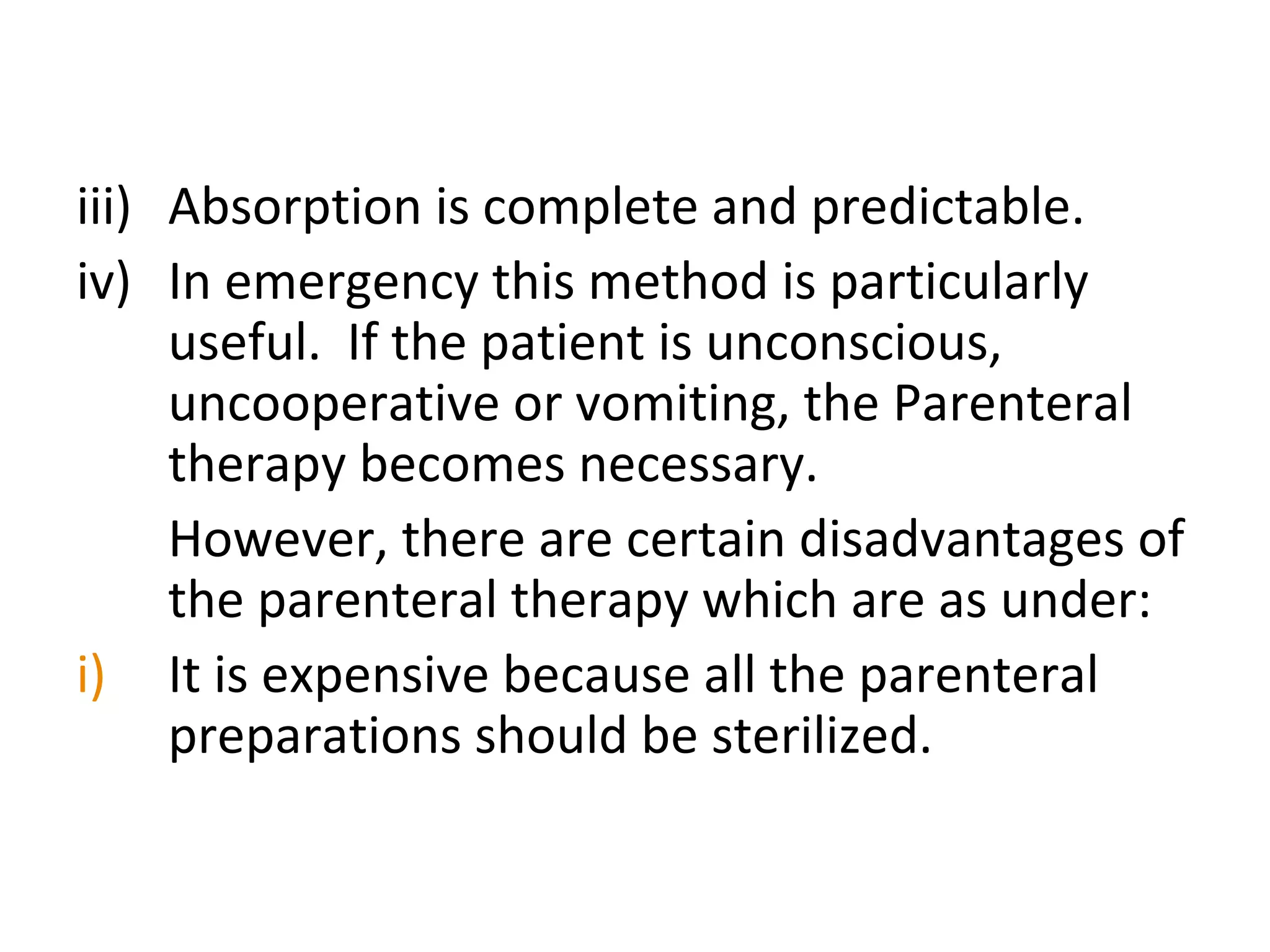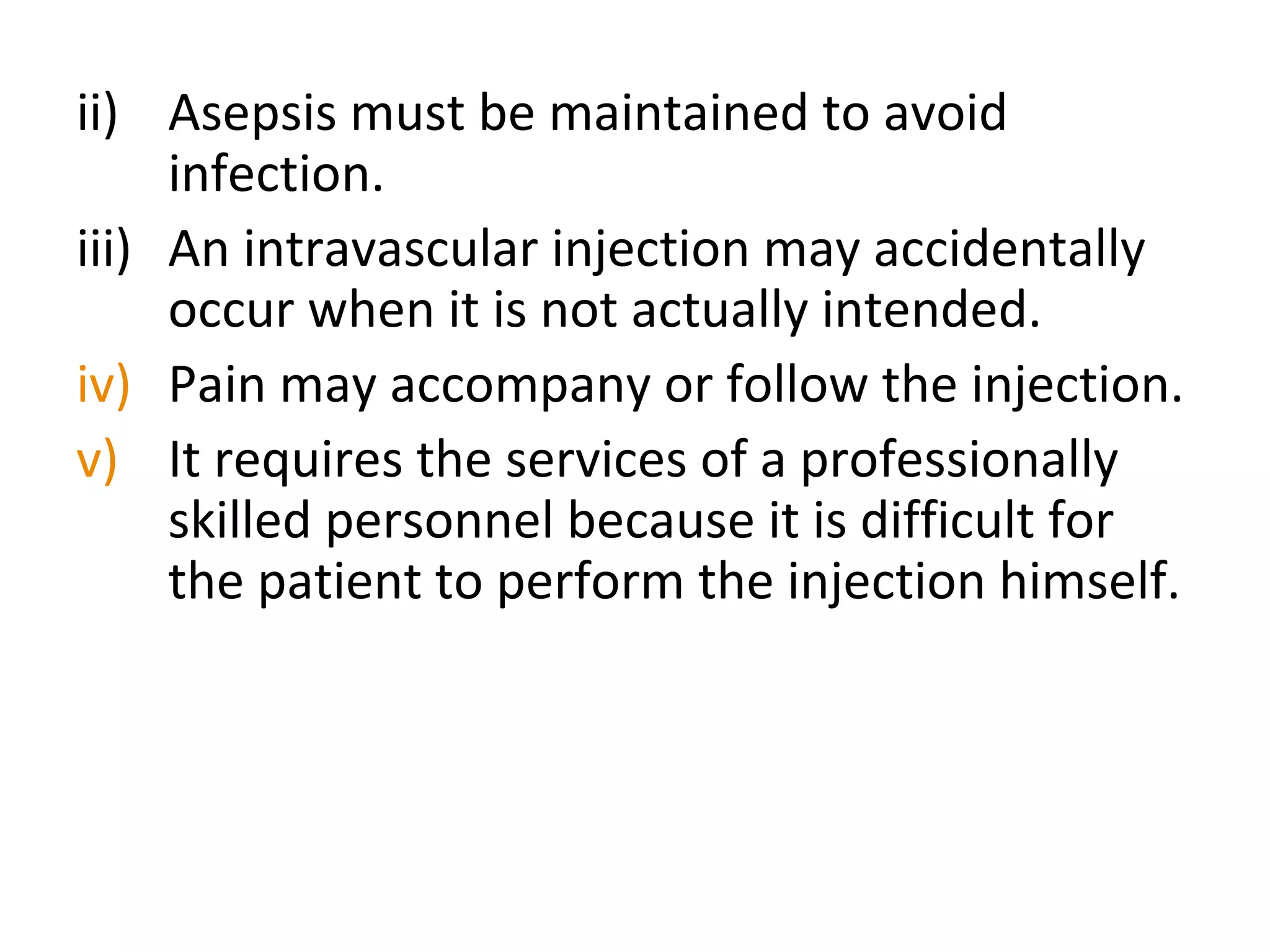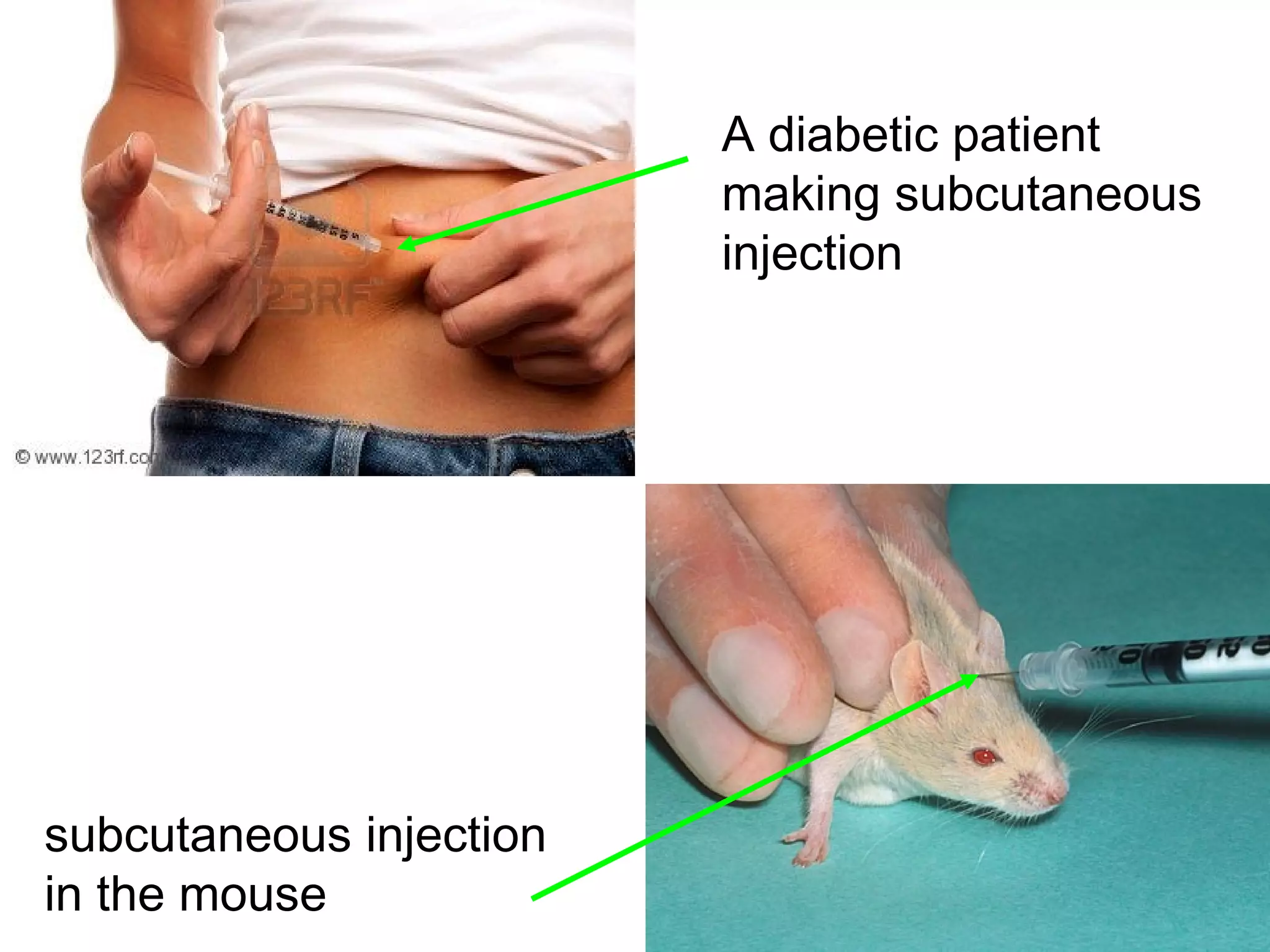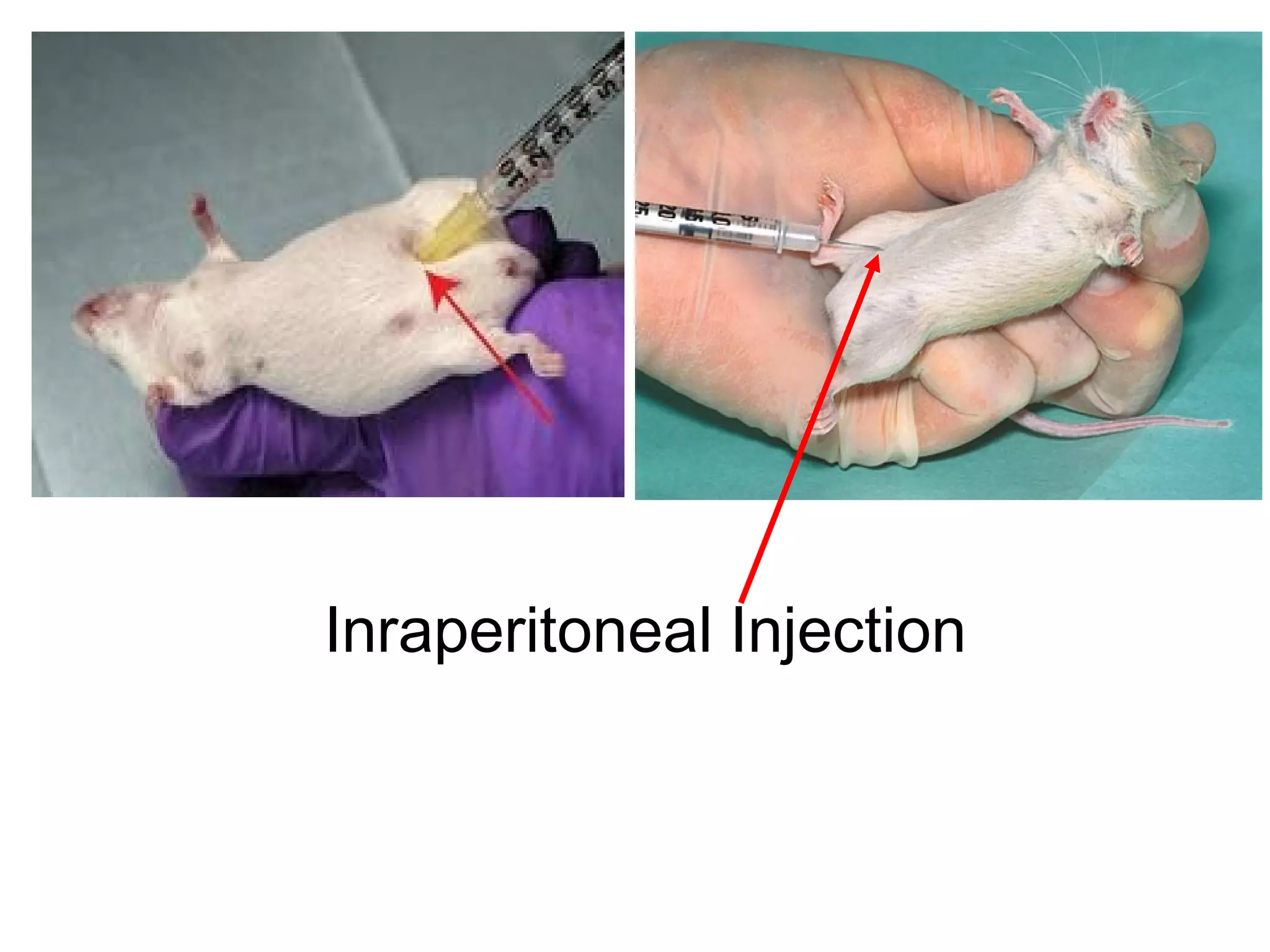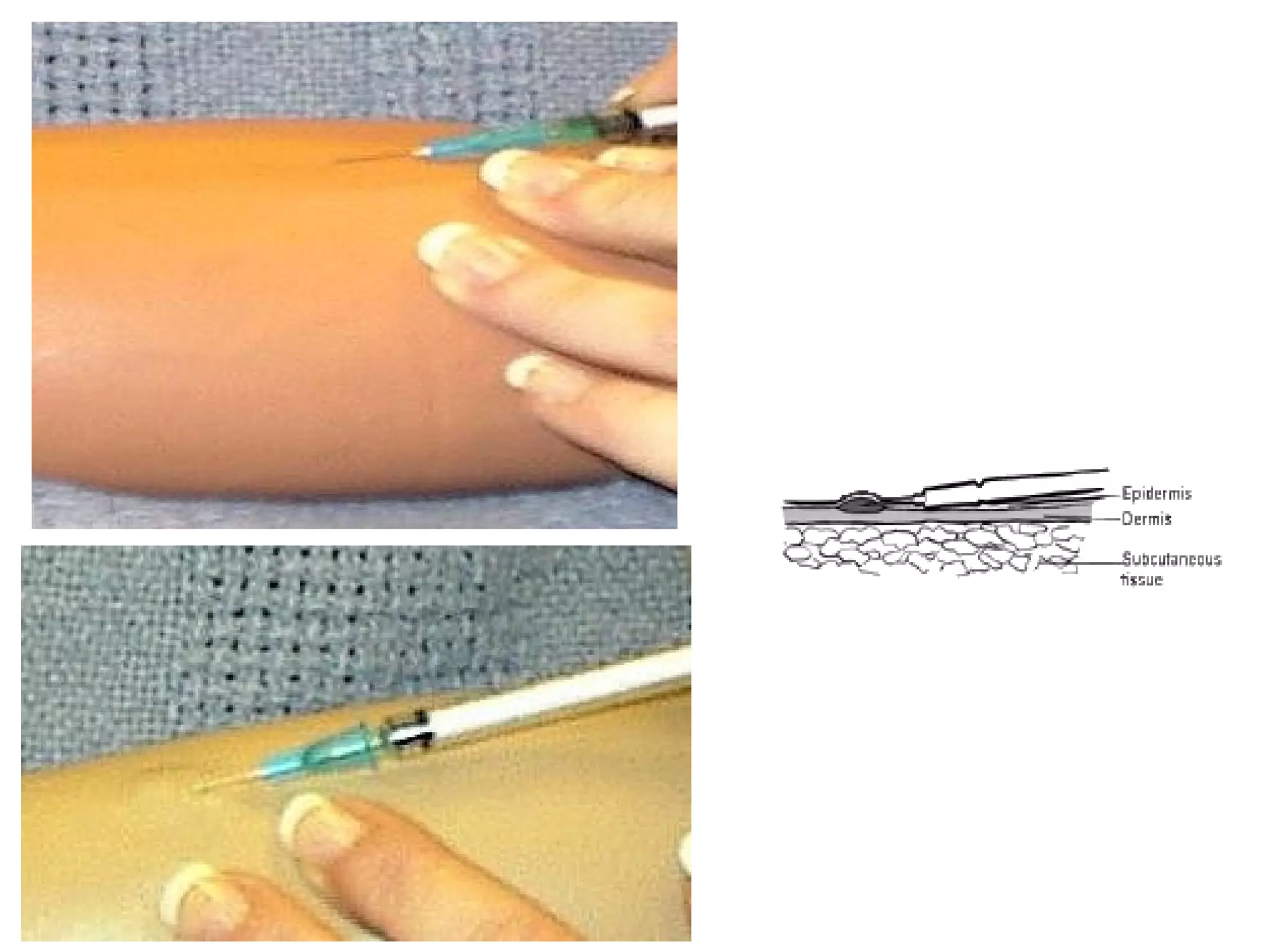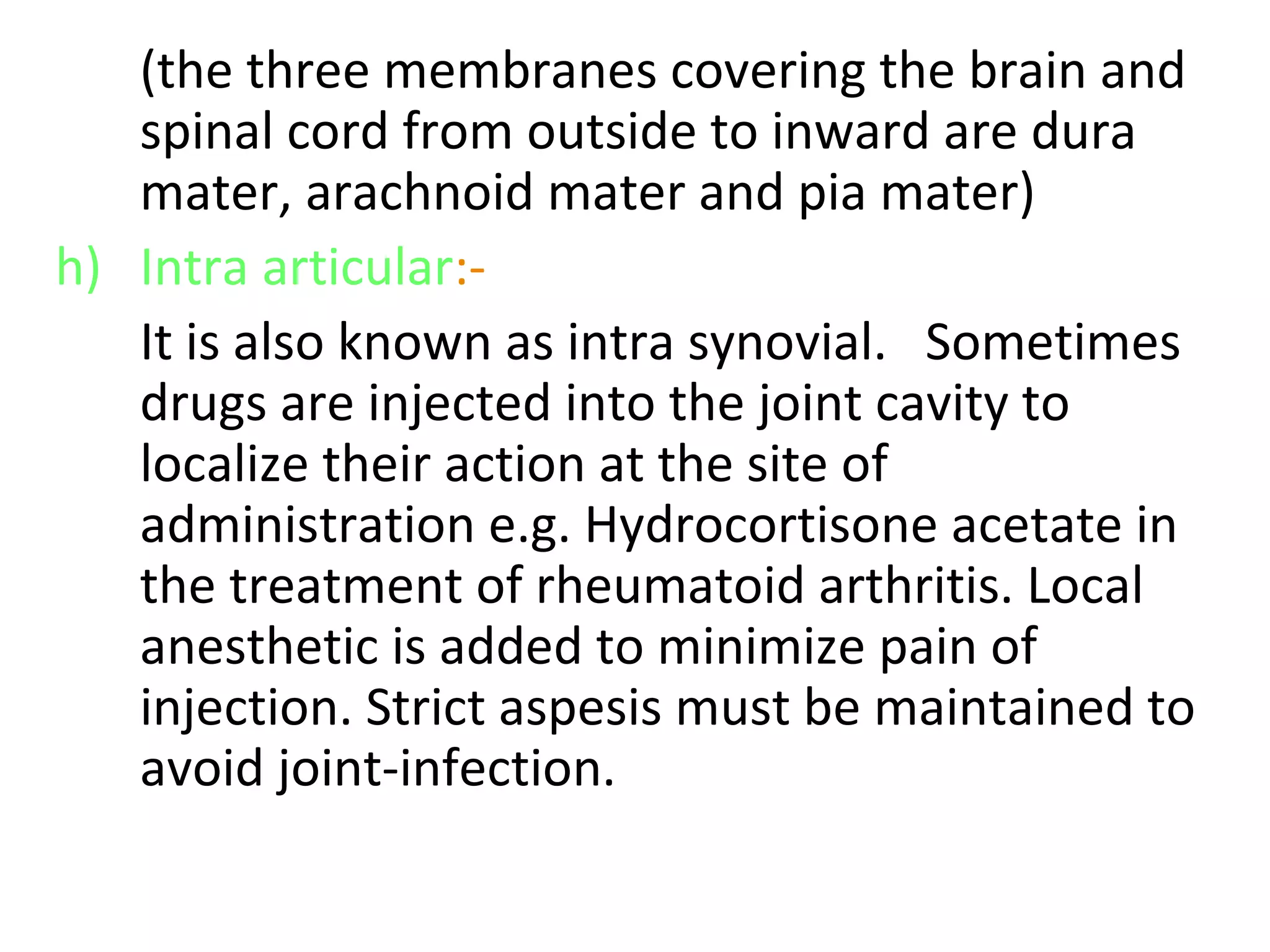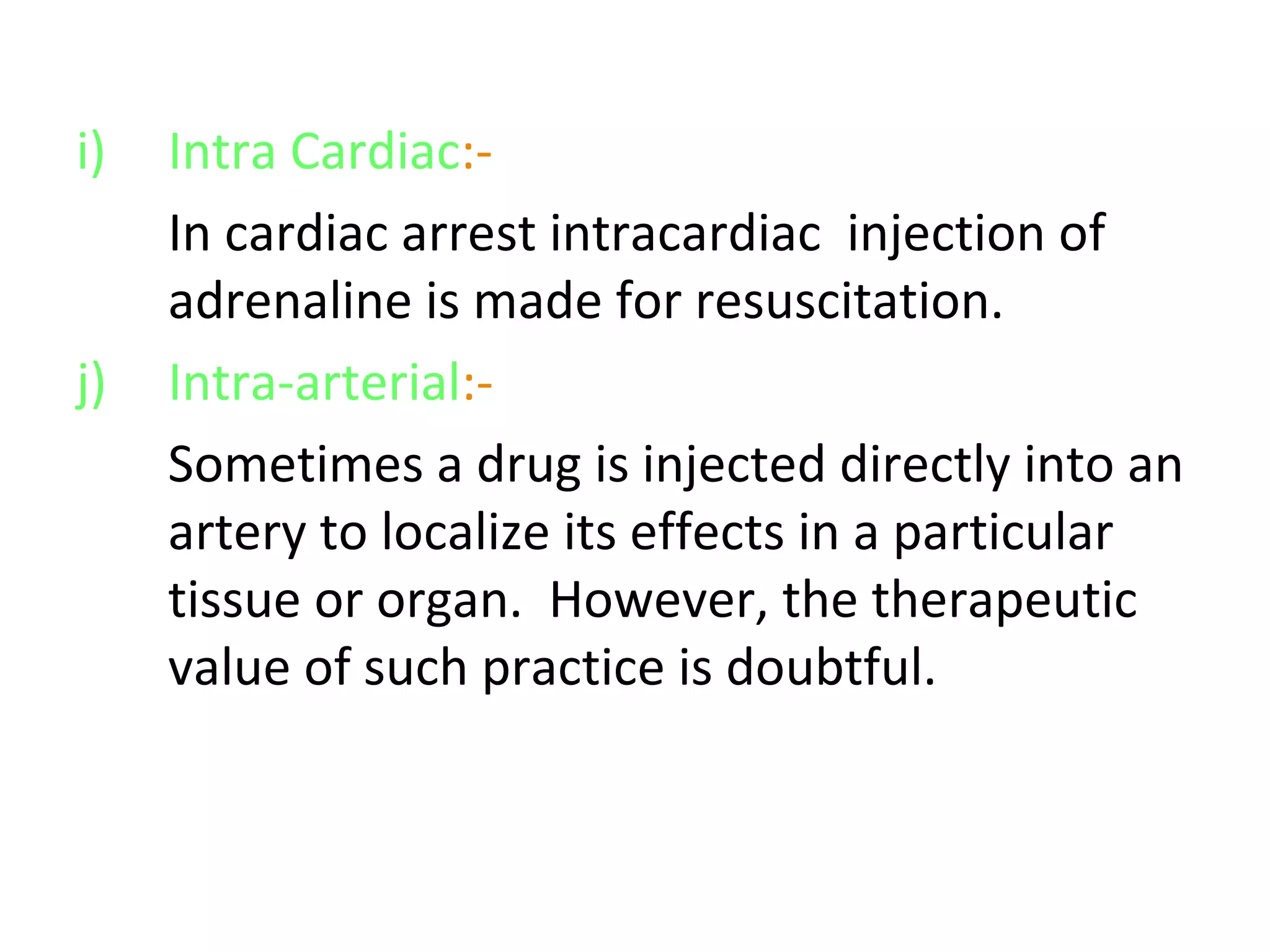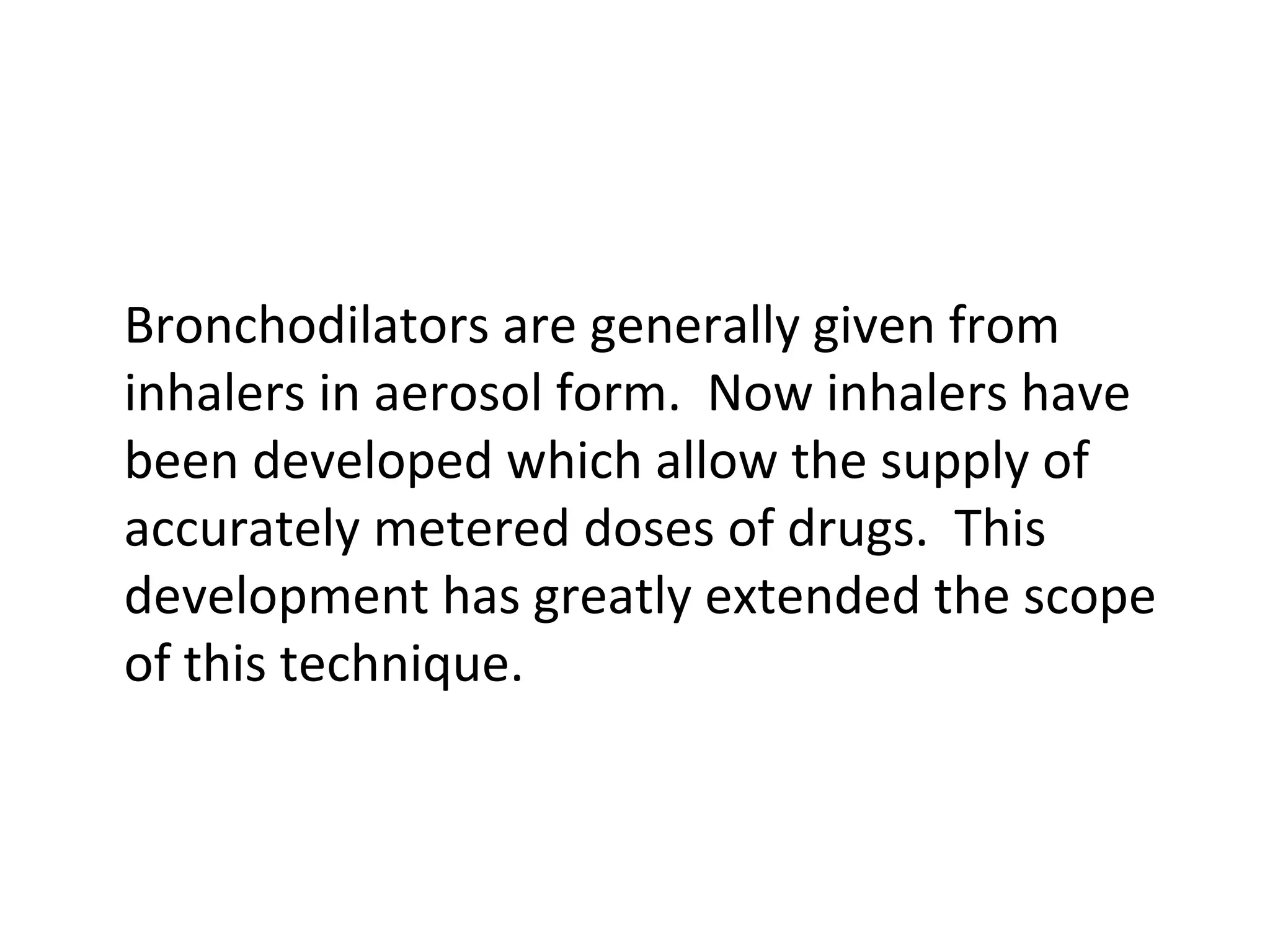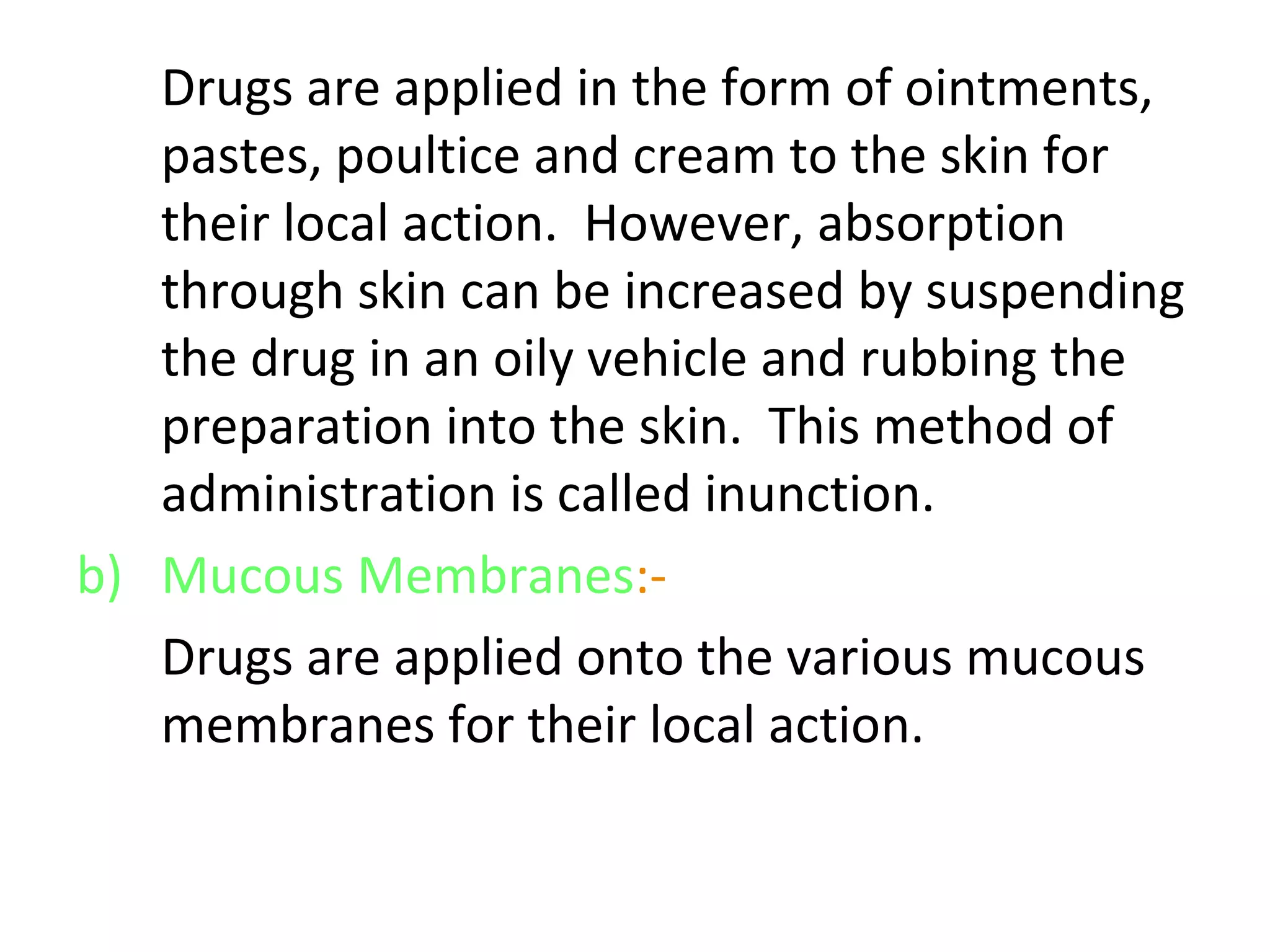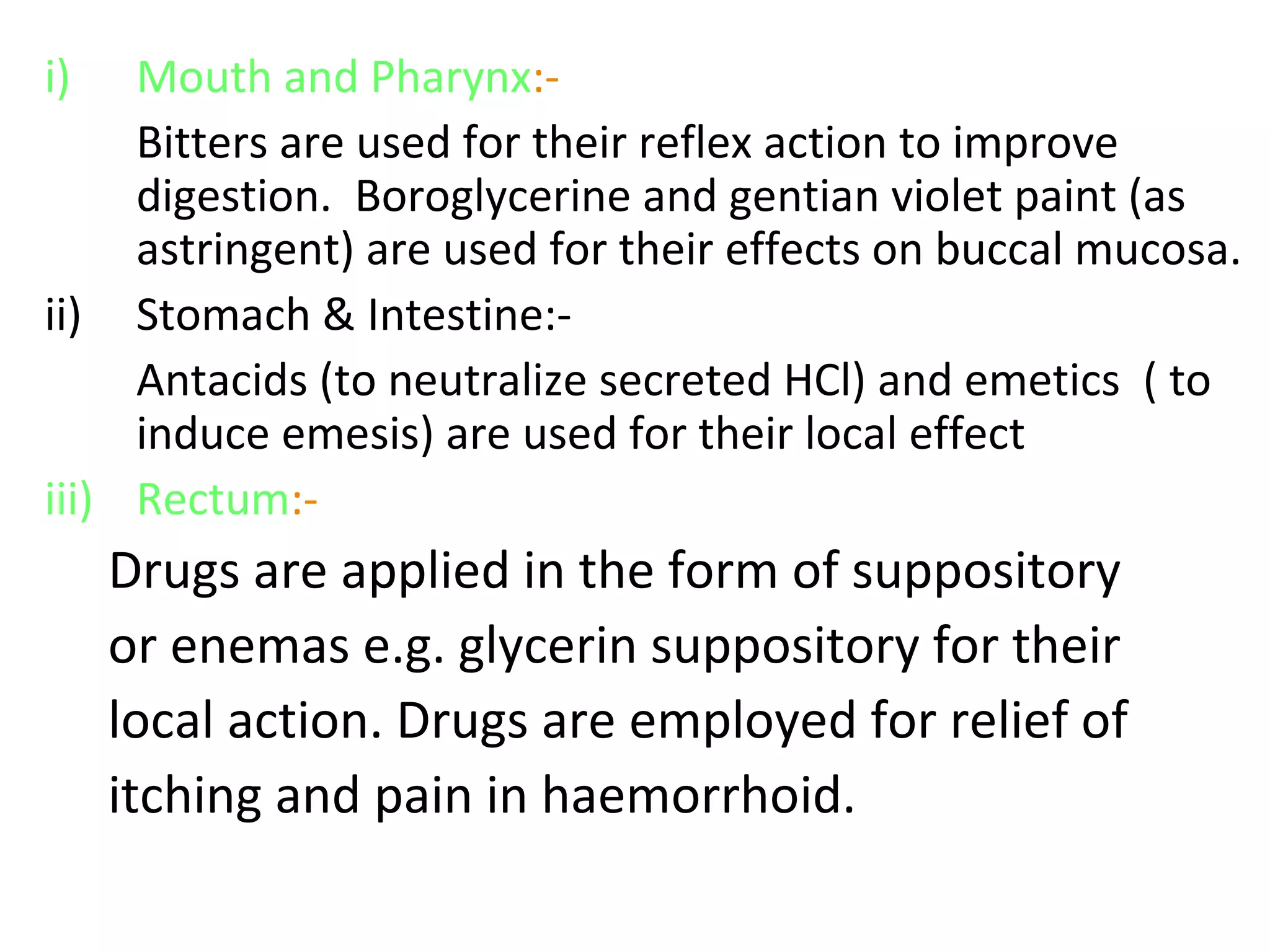This document discusses various routes of drug administration. It outlines 4 main categories: enteral, parenteral, inhalation, and topical. Enteral routes include oral, sublingual, and rectal administration. Parenteral routes bypass the gastrointestinal tract and include subcutaneous, intramuscular, intravenous, intraperitoneal, intradermal, intramedullary, intrathecal, and intraarticular administration. Each route has advantages and disadvantages depending on factors like absorption rate, first-pass effect, patient condition, and drug properties. The document provides detailed descriptions and examples of various enteral and parenteral administration methods.

